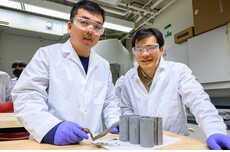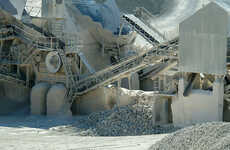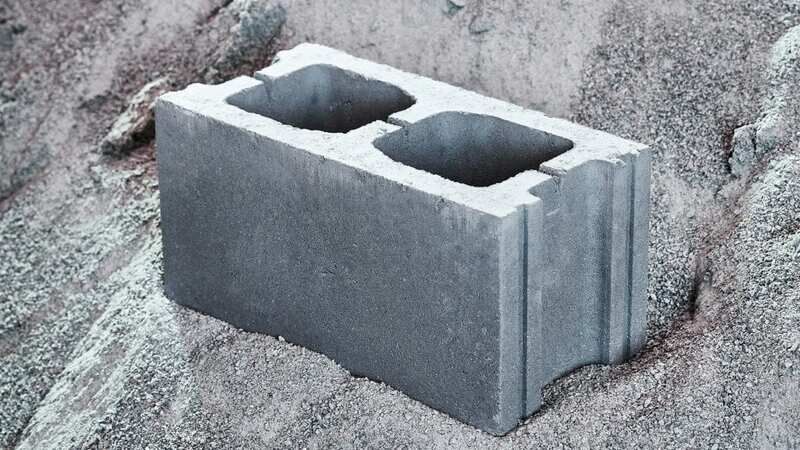Carbicrete Developed a Method for Sequestering Carbon in Concrete
Elena Rahman — June 17, 2021 — Eco
References: carbicrete & dezeen
This carbon-capturing concrete developed by Carbicrete cuts the need for calcium-based cement. Traditionally, calcium is a key ingredient in concrete making. Unfortunately, traditional concrete making produces eight percent of all global CO2 emissions.
The Montreal-based company sequesters carbon away into concrete, claiming to have achieved negative carbon emissions. Instead of using traditional cement, Carbicrete's system uses waste slag from the steel industry in combination with its captured carbon to create their blocks. The company captures carbon from industrial plants that the factories would otherwise release into the atmosphere. More Due to the nature of this process, Carbicrete relies on CO2-producing industries and, therefore, helps reduce the number of additional CO2 released rather than actively removing the pre-existing amount in the atmosphere.
Image Credit: Dezeen
The Montreal-based company sequesters carbon away into concrete, claiming to have achieved negative carbon emissions. Instead of using traditional cement, Carbicrete's system uses waste slag from the steel industry in combination with its captured carbon to create their blocks. The company captures carbon from industrial plants that the factories would otherwise release into the atmosphere. More Due to the nature of this process, Carbicrete relies on CO2-producing industries and, therefore, helps reduce the number of additional CO2 released rather than actively removing the pre-existing amount in the atmosphere.
Image Credit: Dezeen
Trend Themes
1. Carbon-capturing Concrete - Carbicrete has created a method for producing concrete that sequesters carbon, offering an eco-friendly alternative to traditional cement.
2. Waste Material Utilization - Carbicrete uses waste slag from the steel industry to create its carbon-sequestering blocks, demonstrating the potential for other industries to utilize waste material in innovative ways.
3. Carbon-neutral Construction - Carbicrete's carbon-sequestering concrete offers an opportunity for the construction industry to reduce its carbon footprint and produce carbon-neutral buildings.
Industry Implications
1. Construction - Carbicrete's carbon-sequestering concrete presents an eco-friendly alternative to traditional cement and could revolutionize the construction industry's approach to sustainable building materials.
2. Steel - Carbicrete's use of waste slag from the steel industry showcases the potential for the steel industry to repurpose its waste material and reduce its environmental impact.
3. Carbon-capture - Carbicrete's innovative carbon-capturing technology offers an opportunity for carbon-producing industries to reduce their emissions and contribute to a more sustainable future.
3
Score
Popularity
Activity
Freshness






















